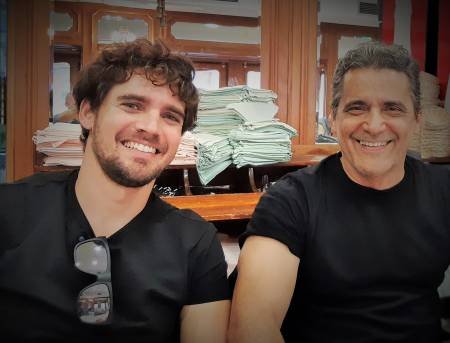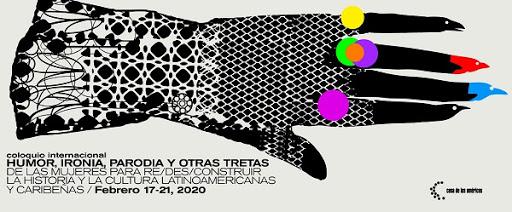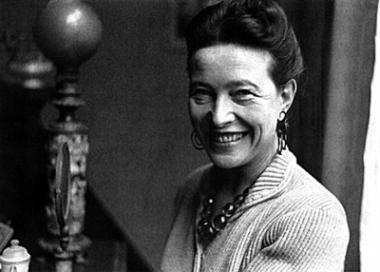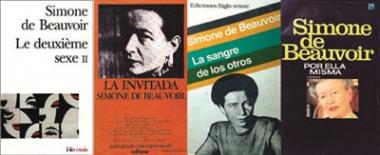Feminism 6
In the US anything goes against dissidents

In the US anything goes against dissidents
Any threat to the status quo of capital will cause all cannons to be used to quell the “rebellion”

The list of activists, musicians, managers and promoters who died in strange circumstances is enormous. One of those cases is that of John Lennon. Photo: BOB GRUEN/EMI
The list of activists, musicians, managers and promoters who died in strange circumstances is enormous. Jimi Hendrix died from a drug overdose when he was no longer a drug addict; John Lennon, Michael Jeffrey, Donald Rex Jackson, Elvis Presley, Buddy Holly, Otis Redding, Janis Joplin, Jim Morrison, Mama Cass, Keith Moon, John Bonham, Bob Marley and Sal Mineo make up an index of more than 50 artists killed in situations doubtful
Alex Constantine, in the book Covert War on Rock, states that “intelligence sectors responded to the anti-war and civil rights movements by carrying out a program of covert assassinations.”
Provocative elements infiltrated the main civil rights organizations of anti-war, student, youth, feminist and political minorities. Each and every one of those identified as enemies of the system was subjected to close surveillance.
They planted false stories; They launched apocryphal proclamations of a violent or racist nature; They used disinformation to hold events and meetings in which false addresses or double summons were sent, and the content of the letters was changed to create discontent and internal divisions among the members and activists of the groups.
The leaders were blackmailed, the leaders were constantly harassed, false groups were created with undercover agents to carry out actions that provoked rejection in the population. Nothing was left to chance.
In 1971, the Police and the National Guard, summoned by Ronald Reagan, then governor of California, forcibly repressed the students of the University of Berkeley, who, together with various volunteers, had built the People’s Park in 1969. The The park was razed and, on top of it, a multi-story car park was built, in an attempt to erase the symbol of unity and utopia from the imagination.
With similar purposes, woodstockmania was created, a big business that sold thousands of records; Rock entered the circuit, attempts were made to domesticate it, make it commercial. Long hair, jeans and sandals became fashionable.
Propaganda accentuated the negative side of the counterculture, sold the image of drug addiction, psychedelia, and alcoholism, distorting the essence of the anti-war fight, of the fight against racial discrimination, against the intolerance of the system. Everything was perfectly framed in sex, drugs and rock and roll.
The CIA and the FBI worked together to prevent, at all costs, the fusion of the Black Political Revolution and the White Cultural Revolution.
This entire gigantic apparatus of covert war was also going to be directed against revolutionary Cuba. The CIA would do everything possible to avoid meeting points between Cuban socialism and the American counterculture.
Source: Imperialism of the 21st century: The culture wars.
Men’s things… and women’s…

Men’s things… and women’s…
Masterfully conducted by Doctor in Historical Sciences Julio César González Pagés and directed by Yolanda Cabrales, a new proposal of Cubavisión channel has already put on the table two topics that generate a range of opinions: machismo and feminism.
Author: Aracelys Bedevia

Digital |digital@juventudrebelde.cu…
March 9, 2021
Translated and edited by Walter Lippmann for CubaNews.

Julio César González Pagés (right) with Yonnier Angulo, who is in charge of the Men in Tangles section. Autor: Juventud Rebelde Publicado: 09/03/2021 | 09:16 pm
The enigma of femininity has made men of all times cavillers. [quibblers] —Sigmund Freud
One more step forward in the effort to build a more humane society, a victory for those of us who work and dream for a better world, represents the program Cosas de hombres [Men’s Things] which has been broadcast every Monday for the past two weeks at 10:15 p.m. on Cubavisión channel.
Masterfully conducted by Doctor in Historical Sciences Julio César González Pagés and directed by Yolanda Cabrales, the new proposal has already put on the table two topics that generate plurality of criteria: machismo and feminism. What is it? Are we or are we not?
The guests represent a wide range of professions and activities that relate male behaviors in different social spheres. Víctor Fowler (writer), Rochy Ameneiro (singer), Omar Franco (actor), David Blanco (singer), Norma Vasallo (university professor), Andrea Doimeadiós (actress) and Marilyn Solaya (filmmaker) have spoken with Pagés so far; all of them very committed to the struggle for egalitarian spaces where men and women have the same opportunities and are valued as human beings, regardless of sex.
In Men’s Things there will be, from the scientific area, research, communication and teaching, Félix Julio Alfonso, Patricia Arés, Clotilde Proveyer, Yulexis Almeida, Tania de Armas, Yonnier Angulo, Jesús Muñoz Machín, Andrei Hernández and Francisco Cruz. Alberto Roque, Lisandra Chaveco, Yohanka Rodney, Yosvel Hernández, Oni Acosta, Enmanuel George, Arlin Rodríguez and Neida Peñalver will also be present, said Julio César González Pagés to Sexo Sentido.
Edesio Alejandro, Cristian Alejandro, Maykel Blanco, Israel Rojas, Jan Cruz, Luis Franco, Jorge Luis Robaina (Karamba), Juan Carlos Rivero (Moncada), Ernesto Blanco, Adrián Berazaín and Raúl Torres will accompany the debate with music, acting and direction. The list includes Rodrigo García, Tony Ávila, Alberto Corona, Denis Ramos, Jorge Martínez, Maysel Bello, Lizette Vila, Marcos Herrera and Sebastián Milo. Representing the athletes will be multi medalist Victor Moya, in the high jump.
Dr. Pagés, leader of the Ibero-American and African Network of Masculinities (RIAM) and author of more than a dozen titles (Macho, varón, masculino and Por andar vestida de hombre, among others), says that “the idea came up in 2013 during a visit of director Yolanda Cabrales to my house.
“She had directed Ecos de mujer and wanted to create a space where men were the protagonists. In 2020 Rafael Pérez Insua, director of Cubavisión, called on us to rethink the project. With COVID-19 we had to look for alternatives. The original idea underwent changes, but gained nuances for discussion.”
-How much time will you be on screen and what other topics will you be discussing?
-We will discuss health, paternity, sexuality, violence… There will be 13 segments with a duration of 27 minutes, divided into four parts , with three guests and a section called Tangled Men, which is coordinated by Yonnier Angulo and addresses the impact of social networks on contemporary life and masculinities.
-We talk a lot about violence against women and very little about violence against men. Don’t you think that machismo is one of the reasons why this violence is invisible?
-One of the big obstacles is that women’s demands have been resisted by men who do not see them as a priority. A change of vision from hegemonic masculinities is to give them the prominent place in the effort to end inequalities in order to achieve a more equitable society.
“Revolutionary experiences have taught us that the inequalities suffered by women do not end with the end of capitalism, because there are men who are still interested in maintaining the subordination of women.
“Understanding the issue is complicated when a sector suggests that these demands can divert us from more urgent or important objectives at the national level or consider them sectoral demands, and believe that we can create the bonds of solidarity necessary to transform society without questioning male supremacy.
“More than defending men, it is about knowing [mens’] vulnerabilities and prioritizing an agenda that deconstructs the myths of [male] supremacy. We must first and foremost learn to be full humans in order to live in harmony and not be the source of so much violence and destruction.”
-Is it a good time for a program of this kind?
-Yes, it comes at an excellent time of changes in Cuban society. Laws related to our masculinities are being passed and it is important to be prepared for this. There is a great need to educate the population on the various questions related to masculinities and to offer ways to unlearn toxic macho values.
Granma Explains Feminism


SUBHEAD
Feminism
My mother asks me, after reading something someone posted, what feminism is. I explain. She, who is 80 years old, looks at me, and before getting up from the armchair, she tells me in a casual tone: “Son, here, since 1959, we call it Revolution”.
Translated and edited by Walter Lippmann for CubaNews.
Author: Ernesto Estévez Rams | internet@granma.cu
February 3, 2021 00:02:34 AM
She confessed to me several times that she danced rock ‘n’ roll. The white variant, which was the one that became popular in Cuba, that of Elvis Presley. When she told me that she danced rock ‘n’ roll, she meant that she used to get her hair disheveled dancing to that devil’s music. She spun around, jumped, was lifted up and thrown to land again to the rhythm of the music. A neighborhood policeman, intolerant and arrogant, came with a lemon in his hand, and made the men drop the lemon inside their pants to see if it would roll down one of their legs. If you didn’t fall, you were in trouble. For the ladies, a tape measure with a visible red mark. Measuring the length of the skirt above the knee, if it was below the scarlet line, you were in trouble. Those were times when you couldn’t talk much with the police.
At that time, she sewed with her mother and sisters to earn a living and took a course in interior design as a way to improve her skills. She was the face in the ECLO of an American food brand. Standing up, smiling, she showed the products and offered samples for consumers to taste the wonders of what was advertised. Her luck wasn’t the worst either. If she had been black, she was useless as an image. For those of black complexion, their lucky destiny was to be a maid, or a servant, whatever you prefer to call them.
Then the Revolution triumphed. She enlisted as a volunteer teacher and was a compañero of Conrado Benítez. Despite her youth and inexperience, she was put in charge of several boarding schools. They were entire neighborhoods converted into schools, once run by the bourgeoisie or their cronies. Now, a school for poor women, peasant women, urban women, humble women.
Her sister also enlisted as a literacy volunteer and became a literacy teacher. The other sister, the eldest, the same luck, and what luck! They became teachers, they taught. They learned. She, the director of the school, knew all of La Lisa, La Coronela, Playa. The houses of the officers of the defeated army became schools, she became the teacher of other women. In the photos, the microphone higher than her physical stature. Speaking, guiding, directing, raising her arm in harangue, waving her hand.
She was a delegate, president of the CDR, militia member, company leader, Party militant. She was white, she married a black man from Guantanamo. A black man who fought in the underground, a black man who became a university student. A black man who is still by her side today. He was a teacher, a cane cutter, a company leader, founder of the Party. And along the way, at some point, they had time to have children. They, the two of them, neighbors to anyone, not unlike so many others in the same place, in the same circumstances.
My mother asks me, after reading something someone posted, what is this feminism. I explain. She, 80 years old, looks at me, and before getting up from the armchair, she tells me in a casual tone: Son, here, since 1959, we call it Revolution.
One Story, Multiple Readings

One Story, Multiple Readings
Published: Tuesday 12 January 2021 | 08:41:40 pm
When talking about the Middle Ages and Antiquity in Europe and its nearby territories, it seems that women were always subject to male power
Author: Mileyda Menéndez Dávila

Translated and edited by Walter Lippmann for CubaNews.

Viking culture promoted equity between men and women. Author: Taken from www.filo.news Published: 12/01/2021 | 07:57 pm
When talking about the Middle Ages and Antiquity in Europe and its nearby territories, it seems that women were always subject to male power, without the right to participate or manipulated in government debates, relegated to the role of feeding themselves, excluded from war, science or other basic functions for the human group to which they belonged.
This is what those who consider the concept of equity as a recent “invention” say, and how they describe matriarchy as a system of male slavery and humiliation.
Recent archaeological findings and new readings of ancient texts from a feminist perspective agree that, although misogyny and patriarchy were widespread in many regions with similar expressions, there were civilizations in which women lived alongside men and played important social roles.
Supposedly barbaric and backward cultures, such as that of the Vikings and the one that inhabited India before the Aryan invasions, left evidence of a respectful and even venerable treatment of women and people of non-binary gender in their beliefs, traditions and social structure.
Preserved manuscripts from those times and legends that have survived orally indicate that in addition to respecting the right of women to decide about their bodies and to choose partners of any caste, an infinite number of tribes and clans validated non-heterosexual practices (common among warriors and priestesses), and ambivalent gender identities, visible in graphic representations of everyday life and of their gods and goddesses, which also abounded.
Respectable evidence
In the case of the Vikings, the journal Economics and Human Biology published a study that correlates the nutritional health of the Scandinavian population between ten and 15 centuries ago with the social values that intended equity by gender and age.
Biochemical tests confirm, by the quality and development of the bones found in several settlements, that women were free and active, and from birth they ate at the same time as adult men, not at the end.
Many were trained for war, fishing and hunting, led groups and inherited positions and properties. The most revered were the Valkyries: large women who collected dying and dead bodies in battle to help them move, according to their traditions, into the eternal and sacred world they called Valhalla.
Those customs of the Nordic “savages” were a shock for the descendants of the Greco-Latin culture, who built palaces and roads, dominated the arts and agriculture, but in their cultured cities women had no right to study or own property, did not talk to other men and could be given away as servants by their fathers, brothers, husbands and sons.
The legislations of the current Nordic countries, heirs to the Viking culture, guarantee effective and palpable justice without gender discrimination, while many states born of the Judeo-Christian forge cling to a patriarchal hierarchy in homes and social spaces that has unleashed many wars and justified discrimination for hundreds of generations.
Other archaeological findings of the mid-twentieth century in well-preserved ancient cities, but hidden by nature, confirmed the respect for women as a source of life in the Indus civilization, without such deference to represent for men an economic or social disadvantage, as told in the book Tantra, the cult of the feminine, which we can provide to our readers by digital means.
That tradition of honoring the Mother as a social being (not only as a producer of labor) disappeared with the caste system imposed after the northern invasions, when girls and women became, along with the cattle, a resource to be exploited by the conquerors to survive in hostile terrain and to adapt genetically to the climate.
Also in pre-Columbian America and the original African societies there were stages and cultures in which women flourished alongside their male counterparts. As in other processes of conquest throughout the world, were the hosts “civilizing” which established the male hierarchy to control the lines of inheritance in the territories razed.
By (re)knowing these versions of common history, humanity is better able to write its present and place dignity as the essential value promoted by the Magna Carta of almost all nations.
Humor, Parody and Other Tricks vs. Patriarchy

Humor, Parody and Other Tricks vs. Patriarchy
Analyses of how women writers and artists describe to the public the continued danger posed in the 21st century by machismo, violence against women, sexual harassment, rape, and even femicide . These have been the focus of a Colloquium at Casa de las Americas (February 17-21) convened by its Women’s Studies Program, created in 1994 and now directed by Dr. Luisa Campuzano.
By Mireya Castañeda
February 23, 2020
Translated and edited by Walter Lippmann for CubaNews.

Photo: Taken from the Internet
From literature, theater and cinema, women have decided to expose with weapons as powerful as humor and satire that terrible anachronism that responds to the generic name of patriarchy.
The analysis of how women writers and artists describe to the public the continued danger represented in the 21st century by machismo, violence against women, sexual harassment, rape, and even femicide has been the central theme of a Colloquium at Casa de las Americas (February 17-21) convened by its Women’s Studies Program, created in 1994 and today directed by Dr. Luisa Campuzano.
Under the suggestive and even sarcastic title Humor, irony, parody and other women’s tricks to re/des/construct Latin American and Caribbean history and culture, the Colloquium attracted nearly forty specialists from universities in Canada, the United States, Mexico, Puerto Rico, Chile, Italy, Poland, Portugal and twenty from Cuba.
For our publication, Dr. Campuzano said that the Colloquium was very rich in participation and reiterated that “there is nothing like humor, like parody, irony, to remove anachronistic, ridiculous, and laughable patriarchal prejudices and that battle takes place within literature, the arts, and the theater.
The panels dealt with specific contents such as De cuerpo entero: las décimas y las canciones de Violeta Parra; Las muchachas se diverten. History and political discourse in the Latin American fiction film directed by women, or Women’s humour in political and social cabaret.
Two Cuban examples to appreciate how this serious subject is ironically treated from the stage: the monologue Yaisú by the also narrator Laidi Fernández de Juan performed by Verónica Feria, and a fragment of the piece La cita signed and performed by Andrea Doimeadiós and Verónica Feria.
But in addition to the “tricks” with which Latin American and Caribbean writers and artists put sexism and machismo in check, the Colloquium heard their impact even on many penal codes, including that of Cuba according to one of the presentations, in need of a reform that is planned for 2021 on the island.
The participants are aware of the urgent need to transcend public spaces, a debate of society in general about gender violence, sexual harassment and even cyber-bullying, beyond literature, the performing arts, and academia.
Simone de Beauvoir
 Simone de Beauvoir
Simone de Beauvoir
A tireless fighter for women’s rights
Symbol of the and militant protesting woman of the feminist movement, the French novelist visited Cuba and, hand in hand with its main leaders, learned about the Revolution and the role of the so-called weaker sex in the emerging Caribbean social process.
By Javier Gómez Lastra
May 26, 2016
Translated and edited by Walter Lippmann for CubaNews
 “The fact that determines the present status of women is the stubborn survival of the oldest traditions in the new civilization being outlined. That is what is unknown to hasty observers who see women as inferior to the opportunities offered to them today, or who see only dangerous temptations in those opportunities. The truth is that her situation lacks balance, and for that reason it is very difficult for her to adapt to it. (…)
“The fact that determines the present status of women is the stubborn survival of the oldest traditions in the new civilization being outlined. That is what is unknown to hasty observers who see women as inferior to the opportunities offered to them today, or who see only dangerous temptations in those opportunities. The truth is that her situation lacks balance, and for that reason it is very difficult for her to adapt to it. (…)
“Everything still encourages the unmarried young woman to expect ‘Prince Charming’ fortune and happiness rather than to attempt the difficult and uncertain conquest alone. In particular, it will give her the hope of reaching a higher social stratum than her own, a miracle that will not reward her life’s work. But such hope is dire, because it divides their energies and interests; it is a division that is perhaps the most serious disadvantage for women. The parents still educate the daughter with a view to marriage more than they promote her personal development, and the daughter sees in it so many advantages (…)”.
This text, taken from the work “Le Deuxième Sexe” or “The Second Sex” by Simone de Beauvoir, a French writer, narrator and philosopher and an essential figure in 20th-Century literature and thought, was a theoretical starting point for various feminist groups and became a classic work of contemporary ideology.
The piece, which breaks the existing canons in Europe since the Second World War, tells a story related to the social status of women and analyzes the different characteristics of male oppression.
It also exposes the gender situation from the point of view of biology, psychoanalysis and Marxism, and destroys the existing feminine myths, inciting the search for the authentic and full gender liberation.
Considered ambitious, the text also maintains that the struggle for women’s emancipation is different and parallel to that of the classes and that the main problem to be faced by the so-called weaker sex is not the ideological but the economic front.
The publication evoked strong reactions because of the marked character of nonconformity that the women of that time began to show.
The big push for gender equality
The beginning of the second half of the 20th century had very particular characteristics in the socio-cultural field in Europe. If anything brought about radical changes in ethical, political and philosophical thought in the countries of the Old Continent after the World Wars, it was the enormous need to achieve fundamental human rights and the emancipation of women.
Faced with the example of the policy of equality for all, applied by the governments of the nations of the newly created socialist bloc, many thinkers, human rights fighters, writers, poets, philosophers, and even politicians in Western Europe took a 180-degree turn in their way of valuing life and began to call for true equality between men and between men and women.
It was in this context that Simone de Beauvoir stood out and left a deep mark on the universal history of the world, leaving behind not only her extensive literary work, but also her tireless struggle.
In spite of her bourgeois origin, from a very young age the intellectual knew the difficulties of her contemporaries in a world dominated by men, markedly masculine, made in the image and likeness of the male and where women were relegated to domestic chores or simply to love.
Her work reflected women’s problems, marked by exclusion from production and home-based processes and purely reproductive functions, which represented the loss of all social ties and the possibility of being free.
A radical change
Simone was born in Paris on January 9th, 1908, in a district where coffee shops were beginning to proliferate, where literary gatherings were present and intellectual environments that logically influenced the writer’s education were created.
Very early on she excelled as a brilliant student and studied philosophy at the Sorbonne. Until 1943, she was involved in teaching in high schools in Marseille, Rouen and Paris.
At the age of eighteen, she wrote the first literary essay where the protagonist has many traits in common with her. From that moment on, literature played an essential role in her work.
In 1929 he met the philosopher Jean-Paul Sartre, who became her companion for the rest of her life. Together they shared almost five decades of existence.
Sartre’s influence was unquestionable and Simone began to make use of her existential freedom. This led her to renounce her family and friends, adapting to the real world and choosing a new system of life based on her encounter with the philosopher.
Under these principles, she managed to penetrate the world of the Parisian intellectuals of the 1930s, being one of the few women that this closed universe came to accept.
 Extensive literary legacy
Extensive literary legacy
According to the vast majority of critics, researchers and scholars of Simone’s literature, in her literary texts she dared to revise the concepts of history and character and incorporated, from an existentialist perspective, the themes of freedom, situation and commitment.
Together with Sartre, Albert Camus and Merleau-Ponty, among others, she founded the magazine Les Temps Modernes [Modern Times], whose first issue was published in October 1945 and became a political and cultural reference point for French thought in the mid-20th century.
The thinker’s extensive work includes the texts “The Guest” (1943), “The Blood of Others” (1944), “Pyrrhus and Cinema” (1944), “All Men are Mortal” (1946), “For a Morality of Ambiguity” (1947), “America Today” (1948) and “The Farewell Ceremony” (1981).
In the latter, she openly dealt with the curious love relationship, from her youthful days to her old age, and the death of her companion, which implies their hard separation. Despite the absolute identification between them, they never shared the same roof, making use of freedom and with no other purpose than the mutual need to find each other, which allowed them to achieve a perfect symbiosis.
The work ends with the striking phrase: “His death separates us. My death will not bring us together, it is so. It’s been a long time since our lives could have melted together.
In the mid-twentieth century, with some feminists, she also established the Women’s Rights League, which set out to react firmly to any sexist discrimination, and prepared a special issue of Modern Times to discuss the subject.
Her many testimonial and autobiographical titles also included other texts such as “Memoirs of a Formal Young Woman” (1958), “The Fullness of Life” (1960), “The Power of Things” (1963), “A Very Sweet death” (1964), “Old age” (1968), “The End of Accounts” (1972) and “The Farewell Ceremony” (1981).
Character is destiny
The Algerian war broke out in 1954 and Simone felt powerless in the face of reality, thus beginning her period of political struggle.
She took part in anti-fascist demonstrations and gave lectures to the students, but all attempts to impose criteria against the system were unsuccessful, and, despite her efforts, Charles de Gaulle was declared President of the Republic.
This new political situation prompted Simone to rekindle the need to rebel once again, and she agreed to accompany Sartre to Cuba in 1960. There she met Fidel Castro and Ernesto Che Guevara, among other revolutionaries, in Havana. Cuban photographer Alberto Korda documented the meeting between the couple and the two leaders.
Both Sartre and Simone were always fascinated by the Heroic Guerrilla. At the time of his death, seven years later, Sartre wrote: “Che was not only an intellectual, but also the most complete human being of our time”.
The couple spent almost two months working on the main island of the Antilles, which led to their subsequent and continued dedication to the defense of the Cuban Revolution.
They made an intense tour of the island, which included a tour of the Ciénaga Zapata swamp, the inspirational examination of the book “Sartre Visits Cuba”, published in Havana in 1960 by Ediciones Revolución. In its pages, the philosopher narrated his experiences in the country.
Fundamental decade for women and their rights
The Frenchwoman’s ideas soon reached the rest of the world and Simone de Beauvoir centers began to proliferate everywhere.
The emancipation of women was her ideal of struggle. Without denying the biological differences, she was able to denounce a whole system of oppression that worked – and still persists – from levels such as the home and that can extend to entire nations where one sex is established and dominated by another.
Her main ideology was based on equal opportunities for both men and women and on the true emancipation of all, both at work and in society.
Simone disappeared physically in 1986, but her intense work of ideological activism and broad literary exercise remain imperishable as a sure guide to the struggle for full equality. This is what her work testifies to.
Subscribe to Blog via Email
| M | T | W | T | F | S | S |
|---|---|---|---|---|---|---|
| 1 | 2 | 3 | 4 | 5 | ||
| 6 | 7 | 8 | 9 | 10 | 11 | 12 |
| 13 | 14 | 15 | 16 | 17 | 18 | 19 |
| 20 | 21 | 22 | 23 | 24 | 25 | 26 |
| 27 | 28 | 29 | 30 | 31 | ||



You must be logged in to post a comment.